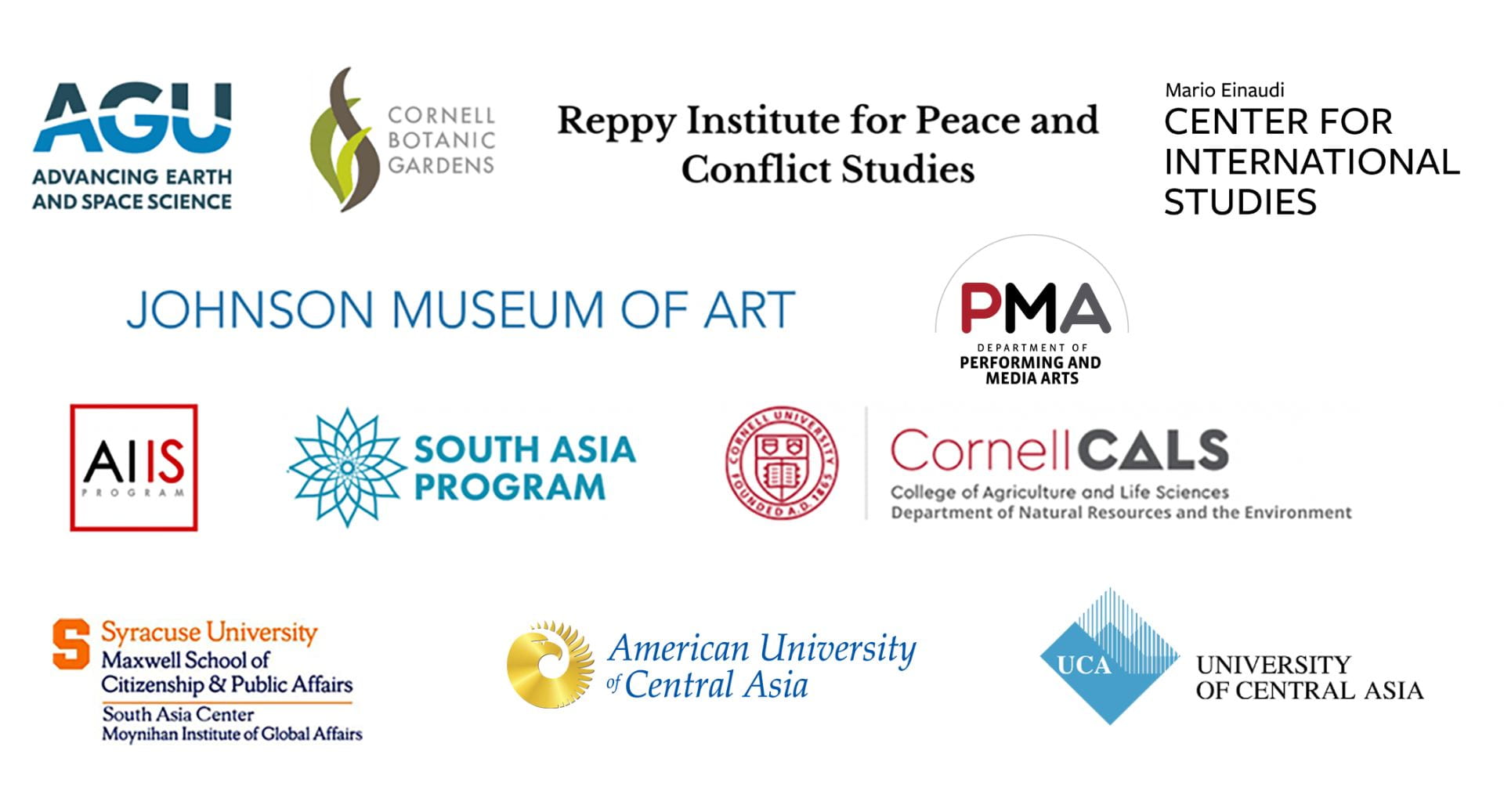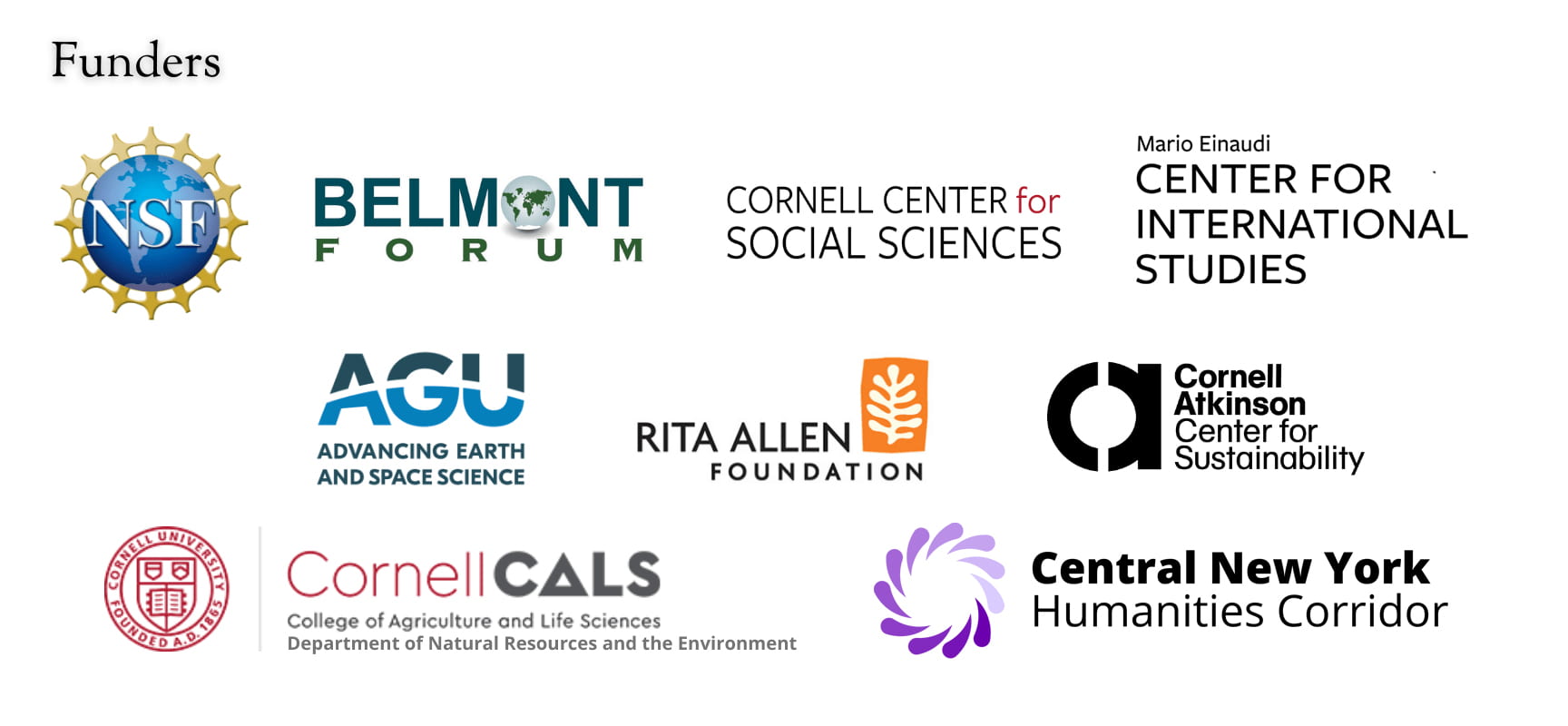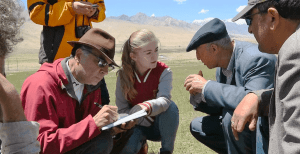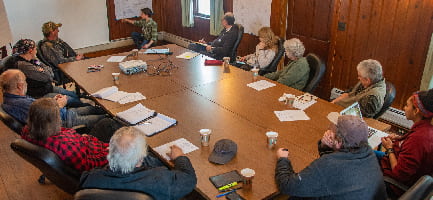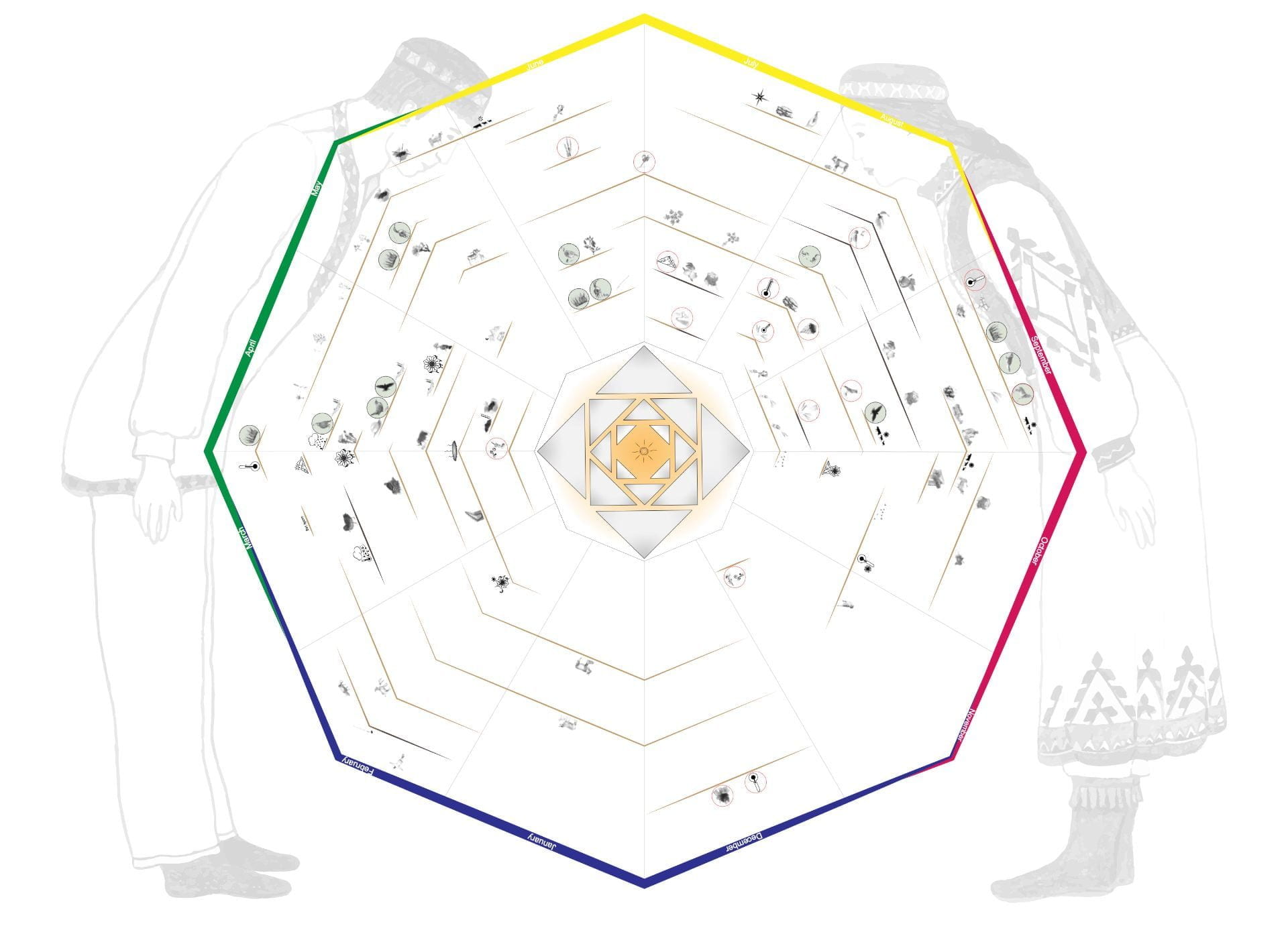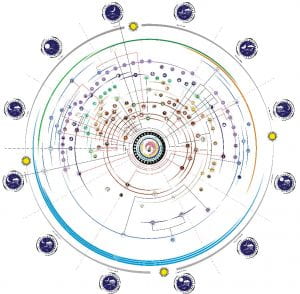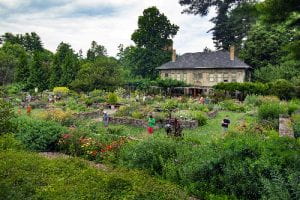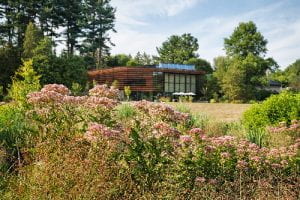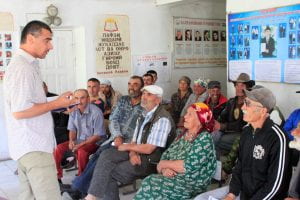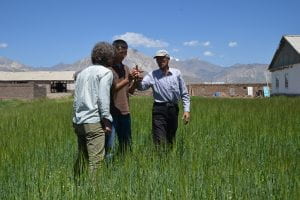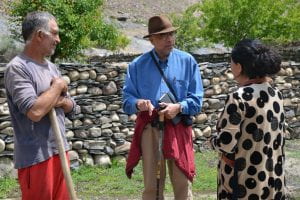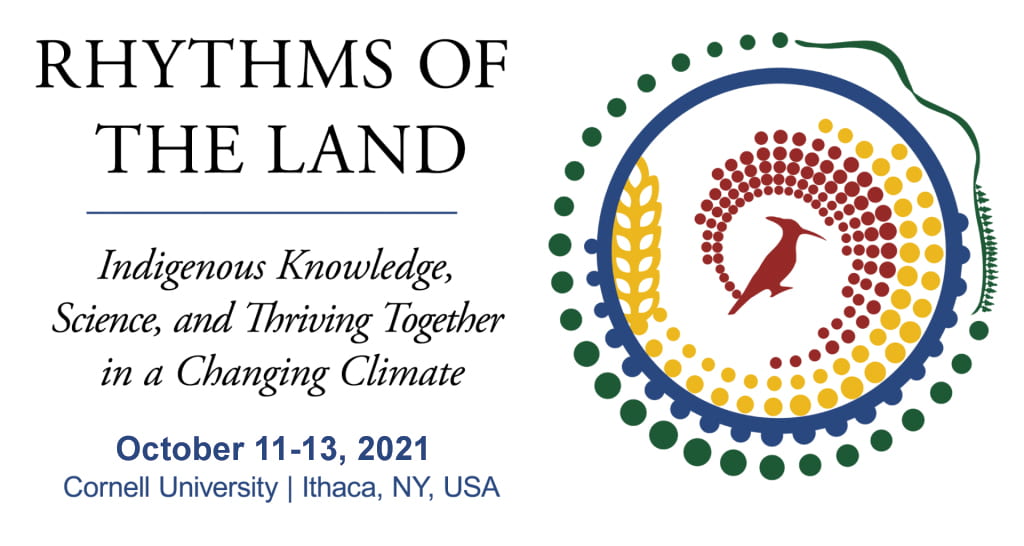

Rhythms of the Land: Indigenous Knowledge, Science, and Thriving Together in a Changing Climate was an inclusive and innovative International Conference bringing together communities, scholars, and policymakers. We presented our research findings from Indigenous and rural societies in the Pamir Mountains of Afghanistan, Kyrgyzstan, Tajikistan, as well as the Standing Rock Sioux Nation and Oneida Lake Watershed in the United States of America. These Indigenous and rural communities have contributed least to the anthropogenic climate crisis but are facing its harshest consequences. There is an urgent need to build anticipatory capacity — that is, the ability to envision ‘just’, ‘equitable’, and ‘sustainable’ futures and develop a plan of action to deal with uncertainties — for food and livelihood security in these communities. While these peoples are largely ignored, we are creating an enabling environment for their voices to be heard. Rhythms of the Land Conference presented findings from the Ecological Calendars for Climate Adaptation Project (ECCAP) undertaken by a team of students and scholars from the USA, Germany, Italy, and China.
| Ecological calendars are knowledge systems to measure and give meaning to time based on close observation of one’s habitat. They reveal seasonal indicators that integrate ecological phenomena (such as the first snowfall, last frost, the flowering of a tree species, or the arrival of a particular migratory bird) with cultural systems. Understanding these relationships has enabled Indigenous and rural communities to anticipate weather and other seasonal processes, and thereby coordinate their livelihood activities. |
Effective responses to anthropogenic climate change necessitate public scholarship through respectful collaboration and co-creation of knowledge among diverse scientific, local community, civil society, and governmental institutions. Climate change exacerbates existing inequities such as poverty, food insecurity, and social injustice. Such structural problems defy singular policy formulations because their root causes are contingent, context-specific, and difficult to perceive. As a result, there are often conflicting understandings of the issues. Therefore, effective responses to building anticipatory capacity need to be collaborative, because no one set of expertise is sufficient, and diversity of knowledge and experience is essential. A participatory approach to developing anticipatory capacity through complex engagement of socio-cultural and ecological systems is not only desirable but, more importantly, a necessity (Kassam et al. 2018).

|
|
Public scholarship in the form of applied research on ecological calendars requires collaboration with institutions that frame and implement policy. We have found that communities use indigenous ecological knowledge for climate change adaptation but it is not incorporated into policy formulation. Civil society organizations and government institutions have a key role to play in the participatory process. Their involvement at the conception of the research aids effective planning for impact and policy formulation once ecological calendars have been revitalized. Links with civil society and governmental institutions is central to accessing resources, advice, and strategically implementing outcomes of our applied research. We have established partnerships with 13 governmental and civil society organizations globally to achieve maximum impact (Kassam et al. 2018).

|
|
|
Revitalization of ecological calendars is only achieved through transdisciplinary collaboration. This conference brought Indigenous community members, scientists, high-ranking policy makers, artists, and our students from around the world to discuss applied research to anticipate climate change at the level of communities. Key individuals were invited based on their unique and diverse perspectives. Indigenous representatives identified opportunities as we strived to articulate policy and adaptation strategies.
The three-day conference began with presentations of our research findings on building local level anticipatory capacity for climate change through implementable ecological calendars. In addition to discussing our findings, our research was communicated through works of art presented by prominent Indigenous artists from around the world. The diverse calendars for each community were presented within an artistic aesthetic. The second day was devoted to policy formulation, communication of climate adaptation strategies, and next steps in applied research. On the final day, we identified specific initiatives for action. Throughout the conference, we hosted public events including a variety of keynote addresses; panel discussions involving scientists, artists, and community members; and exhibits at the Cornell Botanic Gardens and the Johnson Museum of Art.

| Day 1 – Monday, October 11, 2021 (Indigenous Peoples’ Day) | |
| Brian C. Nevin Welcome Center, Cornell Botanic Gardens, Cornell University | |
| 09:00-09:30 | Opening
|
| 09:30-10:00 | Environmental Justice and Indigenous Communities – Mr. James Ross, Teetl’it Gwich’in, Past Chief of Fort McPherson and Negotiator of the Gwich’in Land Claim Agreement |
| 10:00-10:40 | Methodology of Hope – The Role of Ecological Calendars in Responding to the Challenge of Climate Change – Professor Karim-Aly Kassam |
| Herbert F. Johnson Museum of Art | |
| 15:15-15:55 | Measurements meet human observations: integrating distinctive ways of knowing in the Pamir Mountains to assess local climate change – Professor Cyrus Samimi |
| 16:00-16:50 | Artists and Communities Panel Conversation: Environmental Justice
|
| Day 2 – Tuesday, October 12, 2021 | |
| Brian C. Nevin Welcome Center, Cornell Botanic Gardens, Cornell University | |
| 08:35-09:10 | What Are the Challenges for Climate Change Adaptation for Indigenous and Rural Communities? – Mr. David Archambault, Former Standing Rock Sioux Tribal Chairman |
| Schwartz Performing Arts Center | |
| 17:55-18:35 | Where Do We Go from Here? Concrete Outcomes for Climate Adaptations – Mr. James Ransom, Past Chief Saint Regis Mohawk Tribe, Past Director, Environment Program, SRMT |
| 18:45-20:00 | Blood, Water, Earth – performance by Chancellor Santee Smith |
|
|
|
|
Ecological Calendars:
Finding Hope in the Face of Climate Change
The Nevin Welcome Center, Cornell Botanic Gardens
September 13–December 31, 2021
Ecological Calendars: Finding Hope in the Face of Climate Change interprets and explains the significance of the Ecological Calendars and Climate Adaptation Project. The exhibit explains how the calendars were created by using a photographic narrative of the research project, prints of the ecological calendars created by the respective communities and the research team, and two installations of art inspired by the research. Furthermore, the exhibits explore the potential for the use of Ecological Calendars to adapt to increasing uncertainty caused by climate change.
Two installations of art inspired by and based on the research and knowledge of project participants were on display as part of the exhibit. Werner Sun, an artist and particle physicist, who works with folded paper and digital prints, suspended his mobile art piece from the ceiling of the Nevin Welcome Center lobby. The mobile incorporates images from the research project and artistically displays images of project participants as well as plants and animals of the project areas to communicate how ecological calendars visually represent the inseparable relationship between people and their habitat. Natani Notah, an interdisciplinary artist and educator from the Navajo Nation, combines both natural and synthetic materials to serve as a metaphor for coexistence. What that means is that latter cannot exist without the former. Through her sculpture, she addressed the role of the human hand in responding to climate change. All the materials for the sculpture have been ethically sourced or collected over time. Once combined they form an abstracted representation of an ecological calendar. Color, shape, and repetition in the sculpture’s design mimics patterns in nature including symmetries and spirals that are visible in the overall structure as well as the detailed application of beadwork.
The exhibit and art installations are on display at Cornell Botanic Gardens’ Nevin Welcome Center from September to December 2021. Educational programs about Ecological Calendars will take place alongside the exhibit for Cornell University students, faculty, local school children and the visiting public through the fall months.
As host to the international conference, Rhythms of the Land: Indigenous Knowledge, Science, and Thriving Together in a Changing Climate, Cornell Botanic Gardens welcomed participants to an area of great natural beauty and serenity, part of one of America’s most renowned university campuses. As a living museum with a mature botanic garden and arboretum and over 3,600 acres of biologically diverse landscapes that represent the full range of ecological communities found in the Finger Lakes region, Cornell Botanic Gardens’ mission is to inspire people – through cultivation, conservation, and education – to understand, appreciate, and nurture plants and the cultures they sustain.
We welcomed participants of the conference to our sustainably designed Nevin Welcome Center, which is surrounded by specialty gardens featuring herbs, flowers, groundcovers, tropical plants, rhododendrons, grasses, vegetables, plants with winter interest, and more.


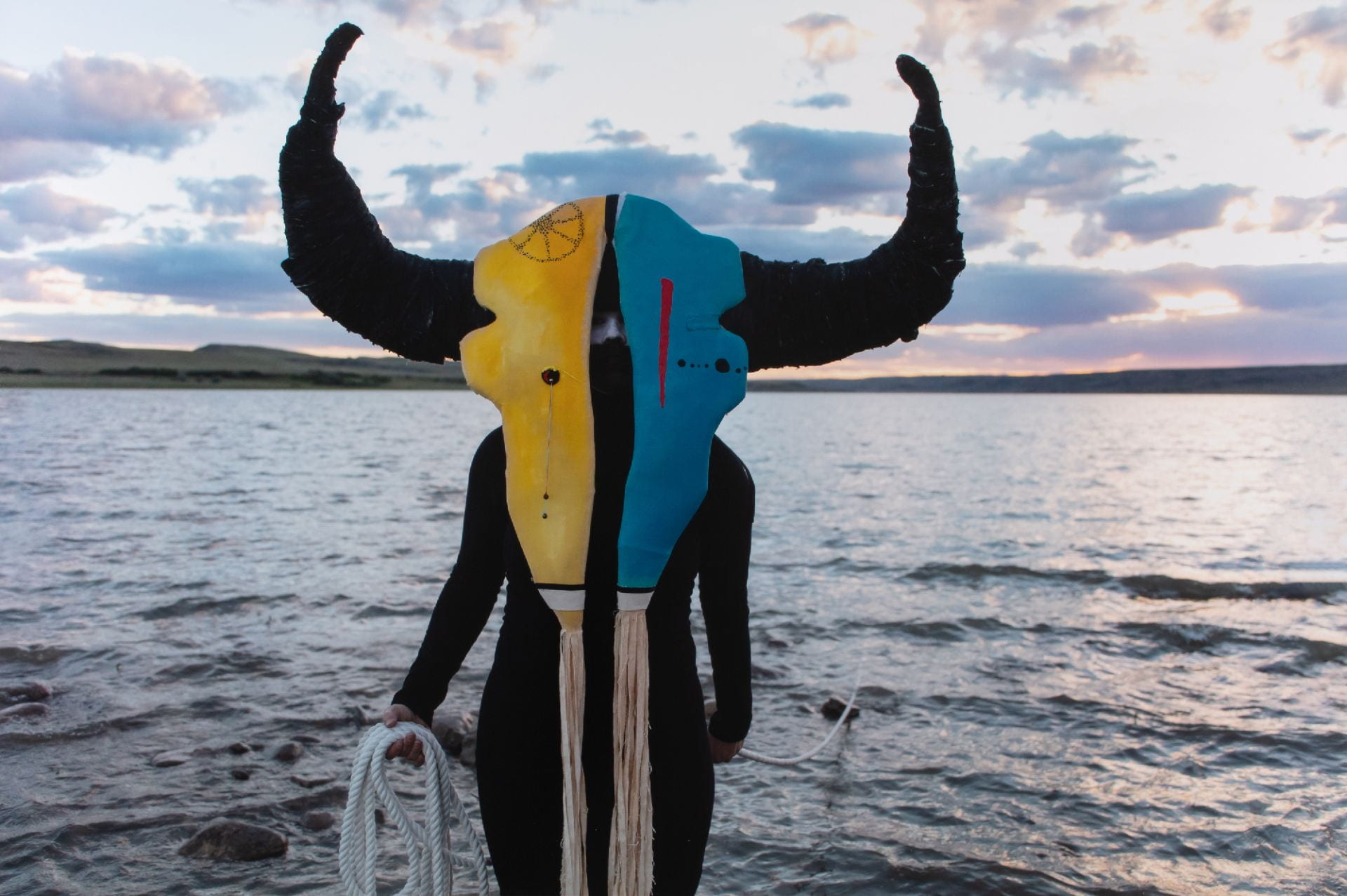
Art and Environmental Struggle
Herbert F. Johnson Museum of Art, Cornell University
August 26–December 19, 2021
![]()

Blood, Water, Earth
Performance by Santee Smith/Kaha:wi Dance Theatre
October 12, 2021
Black Box Theater at The Schwartz Center for the Performing Arts, Cornell University
On October 12th, 2021 October, the Department of Performing and Media Arts at Cornell University ecstatically welcomed renowned Kahnyen’kehàka multidisciplinary artist Tekaronhiáhkhwa Santee Smith. Smith is the founder of Kaha:wi Dance Theatre in Six Nations/Tkaronto and is the 19th Chancellor of McMaster University. In 2017, she designed the opening ceremony for the North American Indigenous Games. International Indigenous womxn’s collaboration performance installation, Blood, Water, Earth was an extension of the Art and Environmental Struggle exhibition presented by the Johnson Museum of Art as a part of the Rhythms of the Land Conference.

|
|
|
|
Outcomes included:
- Ecological calendars for each of the communities, which can be tested, modified, and implemented;
- Intergenerational transmission of this knowledge through innovative STEM curriculum;
- Development of policy between communities, civil society institutions, and government agencies to build anticipatory capacity for climate change;
- Community findings in the form of collaborative research reports;
- Special Issue of the journals GeoHealth and Earth’s Future of the American Geophysical Union; and
- Inspire other related research led by Indigenous and non-Indigenous communities to develop a greater understanding of their habitat through ecological calendars.

Participants and sponsors in the Rhythms of the Land conference included the American Geophysical Union, American Indian & Indigenous Studies Program and faculty partners and thought leaders from the South Asia Program, the Department of Natural Resources and the Environment, Cornell Botanical Gardens, the Atkinson Center for Sustainability, the Mario Einaudi Center for International Studies, the Department of Performing and Media Arts, Judith Reppy Institute for Peace and Conflict Studies, South Asia Center, Moynihan Institute of Global Affairs, Syracuse University, American University of Central Asia, and the University of Central Asia.
| Communities: Pamir Mountains (Afghanistan, Tajikistan, Kyrgyzstan, Xinjiang), Standing Rock Sioux Nation, and Lake Oneida |
| Collaborators: Cornell University, Bayreuth University, Mediterranean Climate Center, Chinese Academy of Sciences |
